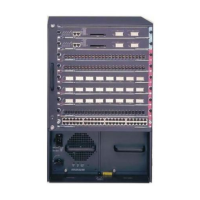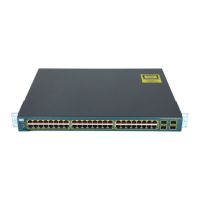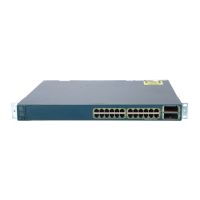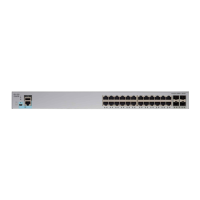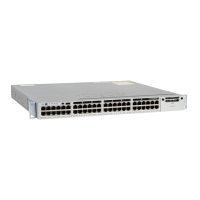7-12
Catalyst 6500 Series Switch Software Configuration Guide—Release 8.7
OL-8978-04
Chapter 7 Configuring Spanning Tree
Understanding How PVST+ and MISTP Modes Work
Disabled State
A port in the disabled state does not participate in frame forwarding or STP, as shown in Figure 7-7. A
port in the disabled state is virtually nonoperational.
Figure 7-7 Port 2 in Disabled State
A disabled port performs as follows:
• Discards frames that are received from the attached segment.
• Discards frames that are switched from another port for forwarding.
• Does not incorporate station location into its address database. (There is no learning, so there is no
address database update.)
• Receives BPDUs but does not direct them to the system module.
• Does not receive BPDUs for transmission from the system module.
• Receives and responds to network management messages.
Understanding How PVST+ and MISTP Modes Work
Catalyst 6500 series switches provide two proprietary spanning-tree modes that are based on the
IEEE 802.1D standard and one mode that is a combination of the two modes:
• Per VLAN Spanning Tree (PVST+)
• Rapid-PVST+
• Multi-Instance Spanning Tree Protocol (MISTP)
• MISTP-PVST+ (combination mode)
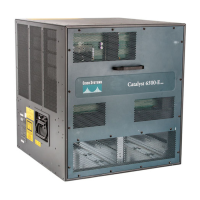
